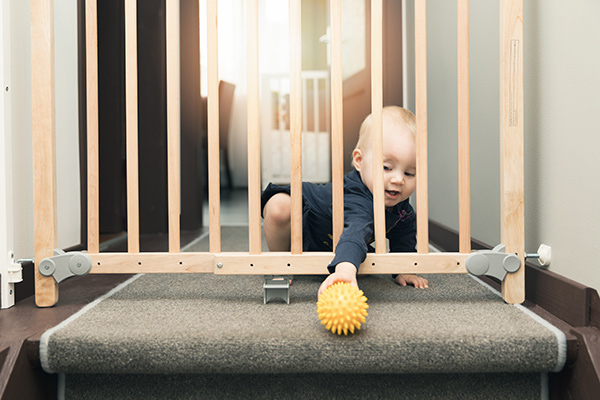Can you name everything in your closet? What about under your bed, or in the attic?
Over time, we may forget some of the items we own, but that doesn’t mean we’d want something to happen to them. In case something does, though, it’s helpful to have a documented list prepared for your homeowners or renters insurance.
Michael Barry, vice president of media relations at the Insurance Information Institute—the industry-financed consumer education organization—recommends making an inventory of everything in your home. This includes your furniture, appliances, artwork, clothing, books—anything that you would want to replace in case of loss or damage due to fire, theft or a weather-related event.
The idea of cataloguing every item of value that you own may be exhausting, but Barry says it’s worth the effort. “It may be a lot of stuff,” he says, “but it probably includes many things you wouldn’t want to live without.”
Here’s how to make getting started a little bit easier.
Download An App
Plenty of apps offer the ability to create a home inventory for little to no money. Try to find one that has convenient features such as barcode readers and secure storage options, says Barry.
Break It Down
 Organize your inventory by room (kitchen, dining room, master bedroom). For each item, include type, cost, date and place of purchase, as well as model and serial numbers. “Fill in as many of the blanks as you can,” says Barry. If you no longer have a receipt for a specific item, estimate the price and approximate date of purchase.
Organize your inventory by room (kitchen, dining room, master bedroom). For each item, include type, cost, date and place of purchase, as well as model and serial numbers. “Fill in as many of the blanks as you can,” says Barry. If you no longer have a receipt for a specific item, estimate the price and approximate date of purchase.
Large appliances, furniture, electronics, computers, rugs and other “big-ticket” items should be individually entered into your home inventory. But, Barry says, you can group other things together, such as clothing, tools, kitchen items and books (for instance, six pairs of jeans or a 40-piece china service). Don’t forget about personal property kept in off-site storage or at your workplace.
Consider Extra Protection
For your most valuable possessions—jewelry, artwork, heirlooms—Barry advises that you contact your insurer; you may need additional coverage beyond the basic policy limits to adequately protect these high-value items.
Don’t Be Overwhelmed
It’s a big job, one that may take several days to complete. “Experts will tell you to start in the kitchen, or start with a small room or with your big-ticket items,” says Barry. “In the end, it’s just a matter of preference how you approach making your inventory. Do whatever feels right to get you to the finish line.”
 Store & Maintain Your Records
Store & Maintain Your Records
Most apps allow you to store your completed home inventory in the cloud or to download it to an external storage device. That way, it will be easy to share with your insurer in the event your property is stolen or damaged, says Barry. And, since you’ve gone to the trouble of carefully recording all of your valued possessions, he advises that you regularly update it—perhaps during April tax season. “Typically, that’s when you’re thinking about your household finances. Why not make your home inventory part of that equation?”
Homeowners and renters insurance help give you peace of mind for your most important personal belongings. Contact the GEICO Insurance Agency for a free quote.
Read More: Take this quiz to see if you’re protecting your heirlooms the right way.
By Patrick Rogers
Illustration by Mikey Burton










Robert Gerstle says,
Why doesn’t GEICO provide an APP and online storage for the data as a benefit for homewoners/renters?
Scott Depew says,
This is ‘passing the buck’. Point [1] You are an insurer stressing the need to keep inventory [2] You recommend 3rd party ‘app’s to create an inventory [3] the ‘app’ and it’s associated data will be subject to loss because it is stored in the very house that you protect [4] You offer an online area for account maintenance [5] You do not provide an online app to store inventory in your online area.
Next you’ll ask for a list of items during time of loss!
I have changed my mind. This isn’t ‘passing the buck’. This is putting the cart before the horse and then telling the horse to run over the cart!
Mark says,
I suffered a catastrophic loss to fire 5 years ago. I was unprepared and underinsured. The fire came while my wife and I were sleeping and got everything but us and our cars.
I suggest a comprehensive, time intensive categorization of all belongings in detail. Also, shop pricing on homeowners insurance but don’t be underinsured. My insurance company worked with me but I still came out about $200-250K short of value in the end.
My insurance agent suggested video of the entire home including closets and shelves. Pictures, receipts, videos and printed inventories saved to the cloud and perhaps a flash drive stored out side of the home. Safe deposit boxes work well here if you have one or are willing to arrange one.
More detail is better and don’t skip the little stuff. It all costs money to replace. Give the inventory some thought. Computer lists and records can be updated and added to as necessary. Hopefully you will never need those records but if you do you will be glad you took the time to create them. I took a lump sum payout on the home contents because I couldn’t imagine the pain of trying to inventory those contents from memory. Ultimately however, I did do a inventory and discovered that the lump sum that I thought fair at the time was roughly equal to only half the actual contents value. Don’t make the mistake that I did.